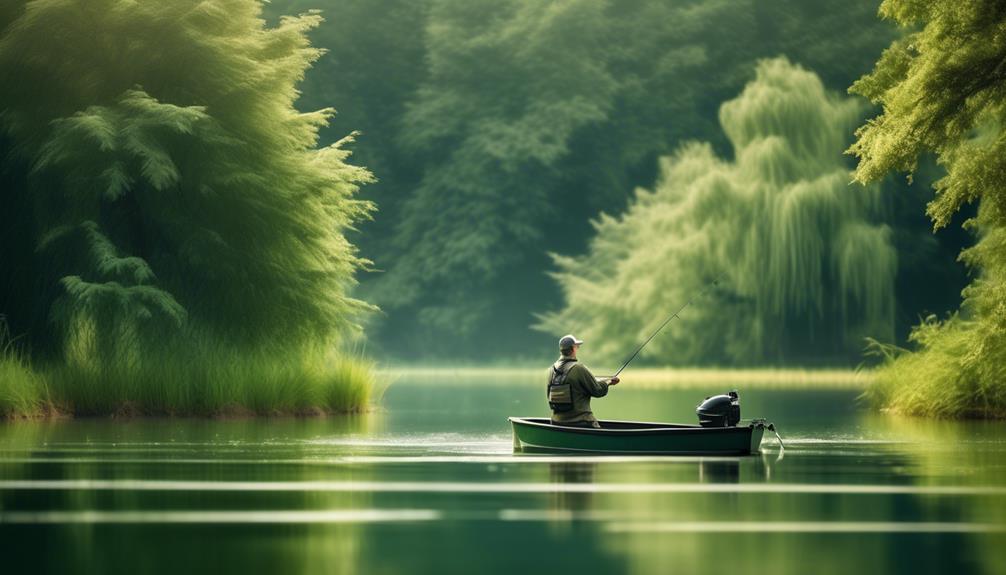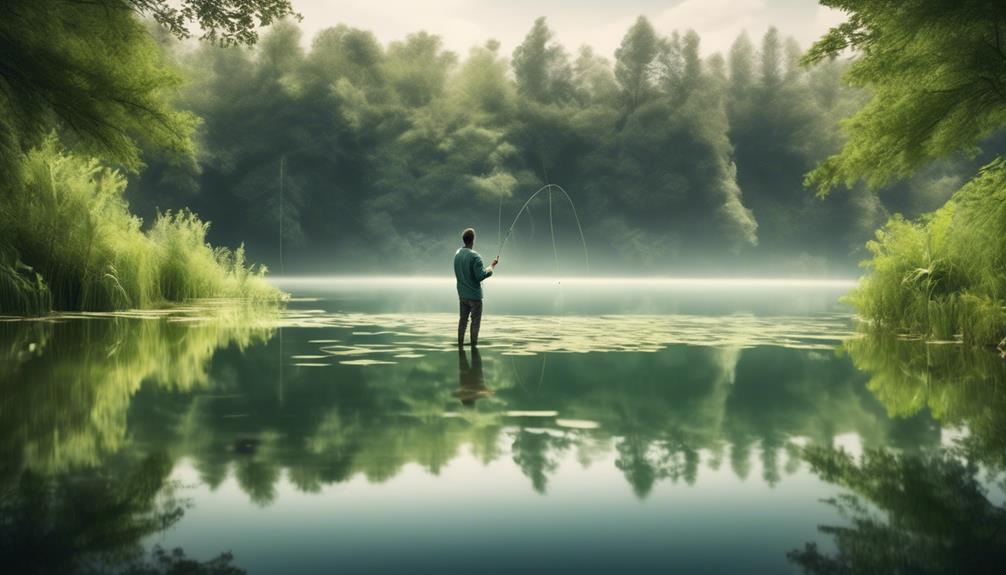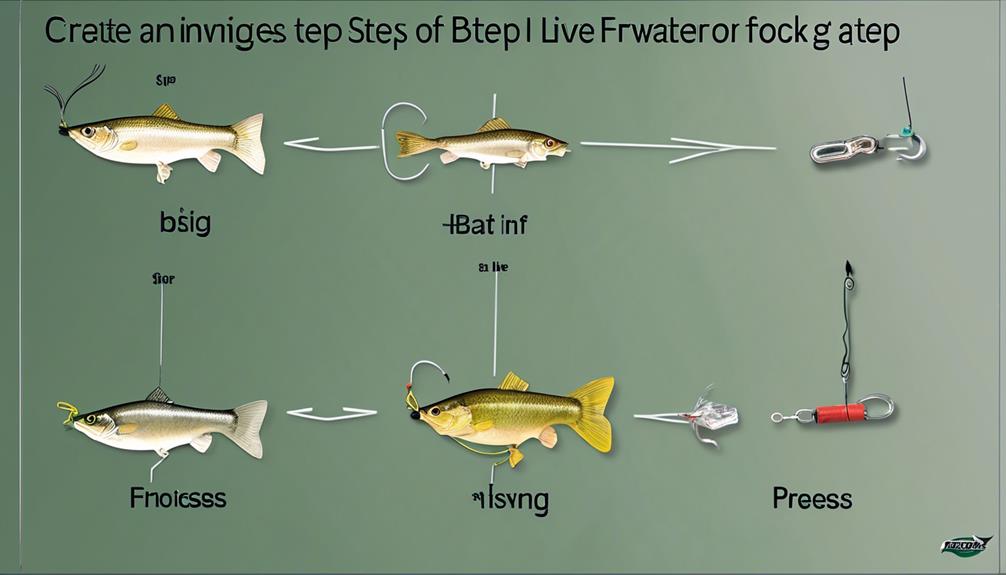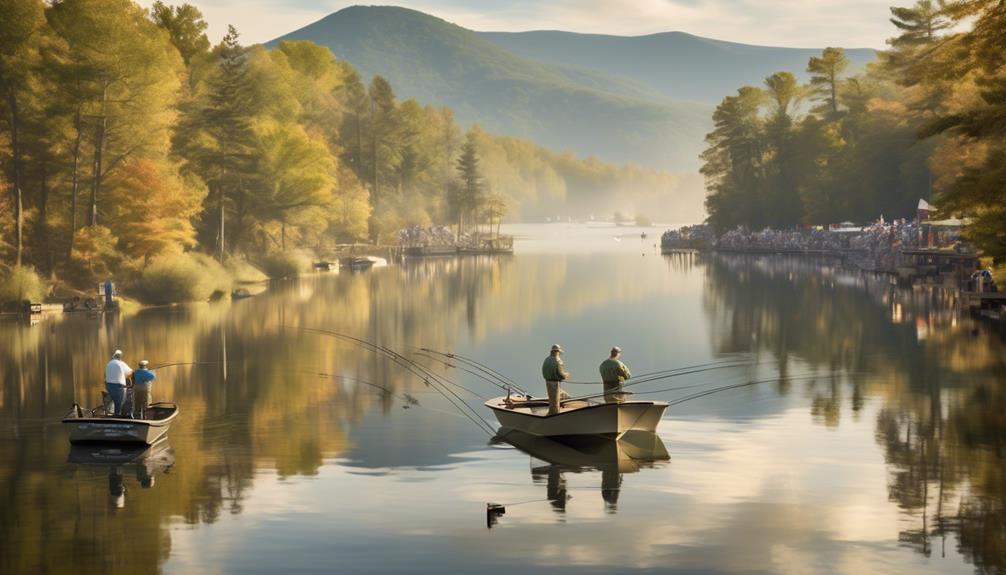Are you ready to take your carp fishing skills to the next level?
As an angler, you understand the thrill of landing a big, powerful carp. But have you truly mastered the techniques that will consistently bring success on the water?
In this comprehensive guide, we'll explore the top freshwater techniques for carp fishing, covering everything from essential gear and bait selection to rigging, casting, and handling.
Whether you're a seasoned carp angler or just starting out, this review of proven techniques will help you elevate your game and reel in more trophy carp.
Essential Gear for Carp Fishing
When carp fishing, having the right gear is essential for a successful and enjoyable experience. One crucial aspect of carp fishing is tackle maintenance. Keeping your gear in top condition is key to ensuring that it performs optimally when you hook a big carp.
Regularly check your rods, reels, and lines for any signs of wear and tear. Clean your equipment after each use to prevent dirt and debris from causing damage. Additionally, lubricate moving parts such as reel handles and bail arms to ensure smooth operation.
By maintaining your tackle, you can avoid equipment failures that could cost you the catch of a lifetime.
Another important element of carp fishing is bait presentation. Carp can be quite selective when it comes to feeding, so presenting your bait in an enticing manner is crucial. Use appropriate rigs and set-ups to ensure that your bait is positioned effectively in the water.
Consider experimenting with different bait sizes, colors, and flavors to see what the carp in your area prefer. Additionally, regularly checking and refreshing your bait can increase your chances of success.
Understanding Carp Behavior and Habitat
Understanding carp behavior and habitat is essential for successful carp fishing. Carp feeding habits vary depending on the time of year and water temperature. During warmer months, carp are active feeders and can be found near the surface, especially in the early morning and late afternoon. They tend to feed on insects, crustaceans, and small fish. Understanding these feeding patterns can help you choose the right bait and fishing times.
Spawning behavior is another important aspect of carp behavior. Carp prefer to spawn in shallow, weedy areas with slow-moving or standing water. During this time, it's crucial to avoid fishing in these areas to allow the carp to reproduce and maintain healthy populations.
Carp habitat preferences include areas with abundant natural food sources, such as shallow bays, backwaters, and areas with submerged vegetation. They also seek out areas with underwater structures like fallen trees or rocks, providing them with shelter and protection.
Additionally, understanding carp migration patterns can significantly improve your fishing success. Carp tend to migrate to different areas of a water body based on factors such as water temperature, oxygen levels, and food availability. By knowing these patterns, you can adjust your fishing location accordingly.
Best Baits for Carp Fishing
To enhance your carp fishing success, it's crucial to select the right baits that match the feeding habits and preferences of carp, such as natural food sources and underwater structures. When it comes to bait presentation, carp are known to be cautious feeders. They often feed on the lake or river bed, so using a bait that mimics natural food and presents itself well on the bottom is essential. Baits such as sweetcorn, boilies, and pellets are popular choices due to their ability to stay on the bottom and slowly release flavor, attracting carp to feed for a longer duration.
Understanding water temperature is also crucial in selecting the best bait for carp fishing. In warmer water temperatures, carp tend to be more active and have a higher metabolism, making them more likely to feed on a wider variety of baits. During these times, using high-protein baits like boilies can be highly effective.
On the other hand, in colder water temperatures, carp's metabolism slows down, and they become more selective in their feeding. During these periods, using smaller, more natural baits such as maggots or worms can yield better results.
Rigging and Tackling Techniques
Selecting the appropriate rigging and tackling techniques is essential for optimizing your success in carp fishing. Bait presentation plays a crucial role in attracting carp, and the way you rig your bait can significantly impact your chances of a successful catch. When it comes to bait presentation, consider using hair rigs, which allow the bait to move freely and increase the chances of a carp getting hooked. This setup also helps in preventing the carp from detecting the hook, leading to more successful hooking.
Additionally, paying attention to line strength is vital. Carp are powerful fish and can easily snap a weak line. Opt for a strong and durable line that can withstand the force of a carp.
Furthermore, consider the action of your rod. A rod with a good action, such as a progressive or through action, can help in playing and landing the carp more effectively. It provides the flexibility needed to absorb the carp's lunges and reduces the risk of the line breaking.
Effective Casting and Retrieval Methods
When casting for carp, ensure that your technique allows for accurate placement of your bait in areas where carp are likely to be present. Proper rod positioning is crucial for effective casting. Hold the rod at a comfortable angle, usually around 45 degrees, and ensure that the rod tip follows the desired trajectory of the cast. This helps in achieving better accuracy and distance.
Good line management is essential for successful casting and retrieval. Always keep the line taut to prevent tangles and ensure a smooth, controlled cast. Proper line control also aids in setting the hook quickly and effectively when a carp takes the bait.
To maximize your chances of a successful catch, practice precision casting. This involves consistently hitting your target area, such as near underwater structures or feeding areas where carp are likely to gather. Precision casting increases the probability of a carp finding and taking your bait.
Additionally, mastering the art of hook setting is crucial for landing carp. After making a precise cast, be ready to set the hook as soon as you feel a bite. A quick and firm hook set is essential to ensure the carp is securely hooked, minimizing the chances of it escaping.
Mastering Carp Fishing Knots
After mastering effective casting and retrieval methods for carp fishing, the next essential skill to focus on is mastering carp fishing knots to ensure the security and reliability of your tackle. Knot tying techniques are crucial for carp fishing, as they directly impact the strength and durability of your line. When tying knots for carp fishing, it's important to consider the line strength and the type of carp fishing reel and rod setup you're using. Different knots may be more suitable for specific line strengths, so understanding which knot to use for your particular setup is vital.
One of the most commonly used knots in carp fishing is the Palomar knot, known for its simplicity and reliability. It's an excellent choice for securing hooks, swivels, or snaps to the fishing line.
Another essential knot is the improved clinch knot, which is ideal for tying hooks, lures, or swivels to the line. Additionally, the blood knot is favored for joining two lines of similar diameter, often used when creating leaders or rigs.
When tying knots, ensure that they're cinched tightly and trimmed close to the knot to prevent any snagging or interference with the rod guides. Regularly check your knots for any signs of wear or weakening, and re-tie them as needed to maintain the integrity of your tackle.
Tips for Finding Carp Hotspots

Explore nearby bodies of water such as lakes, rivers, and ponds to identify potential carp hotspots for your fishing excursions. Locating carp can be challenging, but with the right hotspot strategies, you can improve your chances of a successful catch.
- Observe Carp Behavior
Watch for carp activity such as jumping, splashing, or swirling on the surface. This can indicate feeding areas or spawning grounds where carp are likely to gather.
Look for bubbles or subtle movements in the water, especially near the shore or in shallow areas. Carp often stir up sediment while feeding, creating these telltale signs.
- Research Local Hotspots
Consult with local anglers, bait and tackle shops, or fishing forums to gather information about popular carp locations. Experienced anglers can provide valuable insights on where to find carp during different seasons and weather conditions.
Use online maps and satellite imagery to scout potential hotspots from the comfort of your home. Look for features like underwater structures, vegetation, or inflowing streams that can attract carp.
Proper Carp Handling and Release
To properly handle and release carp, ensure that you have the appropriate equipment and techniques to minimize stress and injury to the fish. Carp safety is essential, and as an angler, it's your responsibility to handle these fish with care.
When handling carp, use a soft, knotless landing net to minimize damage to their scales and fins. Avoid lifting carp by their gills or eyes, as this can cause serious harm. Instead, support the fish's weight evenly with wet hands, and if possible, use a carp-friendly unhooking mat to protect them from hard surfaces.
When releasing carp, choose a calm and shallow area free from strong currents. Hold the carp in the water, allowing it to regain its strength before gently releasing it. Avoid tossing or dropping the fish back into the water, as this can cause injury.
Additionally, it's crucial to ensure that the carp is fully recovered before letting it swim away. You can support it until it shows signs of strong and purposeful movement.
Frequently Asked Questions
What Are the Best Times of Day to Fish for Carp?
The best times to fish for carp are during dawn and dusk when they're most active. Night fishing can also be productive, especially during full and new moon phases. Pay attention to weather conditions and feeding patterns for success.
How Can I Effectively Locate Carp in a Large Body of Water?
To effectively locate carp in a large body of water, pay attention to carp behavior and look for hotspots where they gather. Use polarized sunglasses to spot them near the surface and try different depths.
What Are Some Common Mistakes to Avoid When Carp Fishing?
When carp fishing, common mistakes to avoid include misreading carp behavior, using ineffective baits, and improper rigging. By understanding these factors, you can improve your success and enhance your overall fishing experience.
How Can I Improve My Accuracy When Casting for Carp?
To improve your accuracy when casting for carp, adjust your rod positioning and carefully select your lure based on wind conditions. Practice casting in different wind conditions to increase your casting distance.
What Are Some Advanced Techniques for Targeting Larger Carp?
To target larger carp, try using advanced techniques like boilie baiting to attract them and zig rigging to present your bait at various water depths. These methods can significantly increase your chances of landing big carp.
Conclusion
So, now you have the essential gear, know where to find carp, understand their behavior, and have mastered the best techniques for rigging, casting, and handling.
With the right bait and tactics, you're ready to conquer carp fishing.
Remember to respect the fish and their habitat, and always handle them with care before releasing them back into the water.
Happy fishing!



